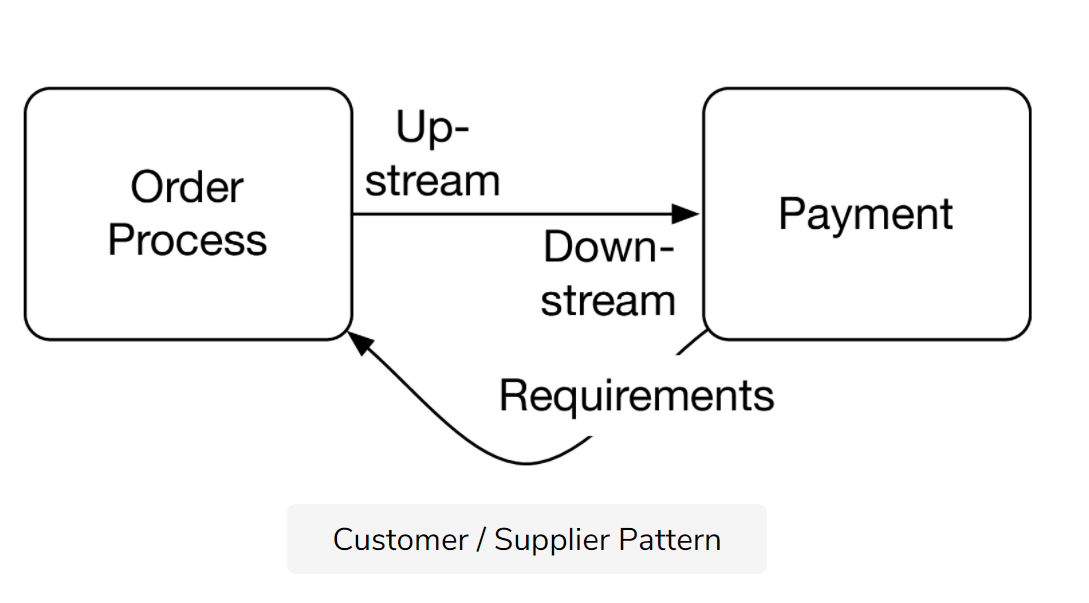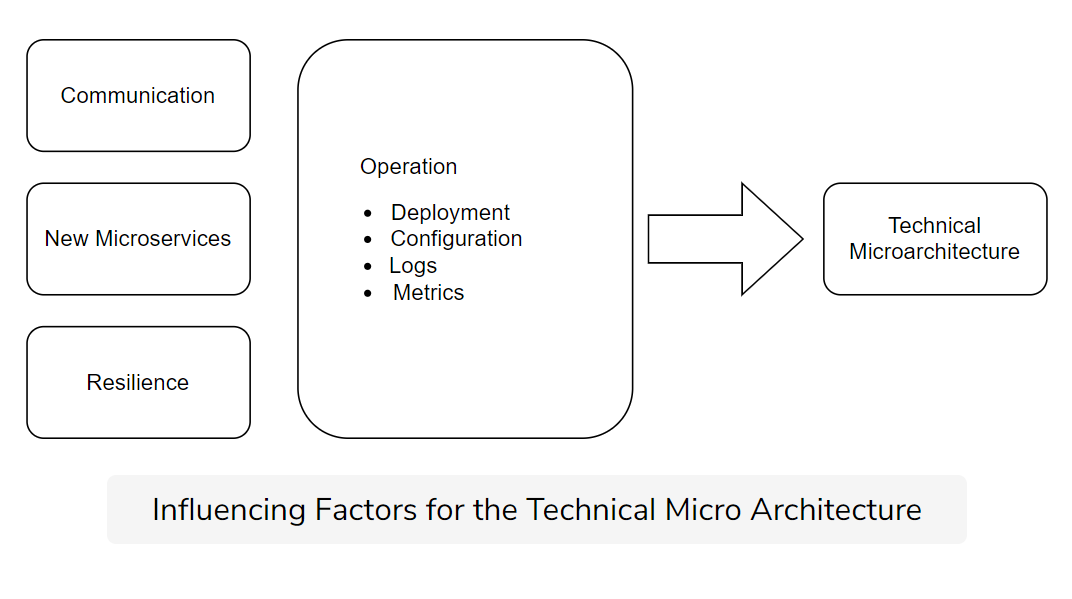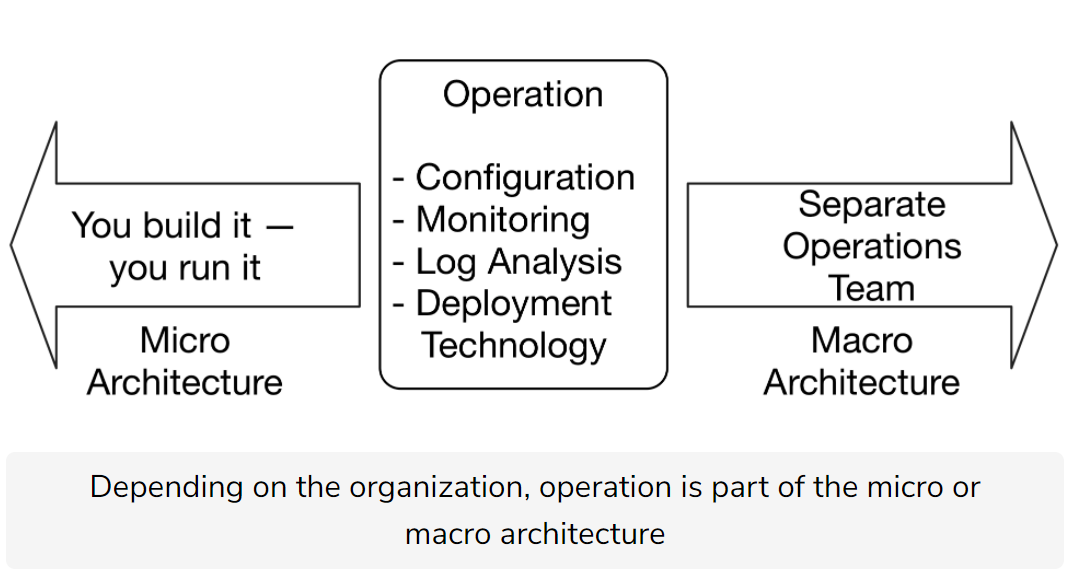Micro and Macro Introduction
Definition
Micro architecture: All decisions can be made individually for each microservice
Macro architecture: All decisions can be made at a global level and apply to all microservices.
Topics
- Division of domain logic: D omain-Driven Design and Bounded context approaches.
- How a DevOps model affects these decisions.
- Who divides the decisions into micro and macro architecture.
Domain Driven Design & Bounded Contexts
Domain-driven design (DDD) offers a collection of patterns for the domain model of a system.
Books:
Domain-driven Design Distilled
Domain-Driven Design Reference
Domain-driven design speaks of a bounded context. Each domain model is valid only in a bounded context.
The simplest design consists of multiple specialized domain models that are valid only in a certain context.
Domain events between bounded contexts
Strategic Design
Domain Model, Bounded Context
Up Steam to Down Steam
customer/supplier pattern

The conformist pattern
The anti-corruption layer
The separate ways pattern
The shared kernel pattern
The open host service pattern
The published language model
Selecting patterns
Architecture Decisions
Micro and Macro architecture decisions
Programming languages, frameworks, and infrastructure
- Micro: technology for the specific problems can be used.
- Macro: only developers knowledgeable in some technologies can be hired.
Database: backup strategy, recovery strategy
- Micro: Avoid global crash but higher effort to maintain
- Macro: Sharing DB contradict the bounded context. Even using a unified database, microservices need to have separate schemata in the DB.
UI
- Micro: different types of users with different requirements
- Macro: uniformed UI.
Documentation
- Micro: part of microservice handed over to another team
- Macro: Standardized documentation
Typical Macro architecture decisions
- communication protocol: REST or messaging interface
- Standardized data format: JSON or XML.
- Authentication: Single authentication system. DC. Users provide their identity.
- Integration: run microservices together in the integration test.
Typical micro architecture decisions

- Authorization: what a user is allowed to do. Vault?
- Testing: domain logic, non-functional requirements: performance critical or safety-critical.
| Micro or Macro | Micro Architecture | Macro Architecture |
| Programming Language | Continuous Delivery Pipeline | Communication Protocol |
| Database | Authorization | Authentication |
| Look and Feel | Tests of the Microservice in Isolation | Integration Tests |
| Documentation |
Operation architecture

- Configuration: technical parameters or domain logic. Password or certificates in Vault.
- Monitoring: technology that tracks metrics / the state of the state. ELK
- Log Analysis: Datadog, splunk, sumu logic. A server to receive and manage logs.
- Deployment Technology: How the microservice are rolled out. Docker, Kubernetes pods, PaaS or installation scripts.
- Macro architecture operation with separate operations teams
- Standardize only technologies
- Testing the operation macro architecture
- “You build it, you run it”: operation as micro architecture
Give a Preference to Micro Architecture
Macro architecture decisions: Best practices and advice
- Specifying only a few points in the macro architecture helps with focusing
- a macro architecture rule can define the monitoring technology
- The macro architecture rules have to be consequently enforced.
- independence is an important goal of microservices
Evolution of macro architecture
From restrictive rules into more languages and libraries.
Organizational Aspects
- Uncontrolled growth
- Who defines macro architecture?
- Independent architecture committee
- How to enforce? document reasons for each rule.
- Black-bot testing conformance.
Independent Systems Architecture Principles
ISA (Independent Systems Architecture) is the term for a collection of fundamental principles for microservices.
Conditions
Should describes principles which have many advantages but do not have to be strictly followed.
1: The system must be divided into modules with interfaces
2: Two separate levels of architectural decisions
3: Modules must be separate processes/containers/VMs
4: Standardized integration & communication: RESTFul or messaging
5: Standardized metadata: token or track ID
6: Independent continuous delivery pipelines
7: Operations should be standardized
- configuration
- deployment
- log analysis
- tracing
- monitoring
- alarms
8: Standardized interface
9: Modules have to be resilient with Asynchronous communication
Variations
Identifying the right bounded contexts is a central challenge